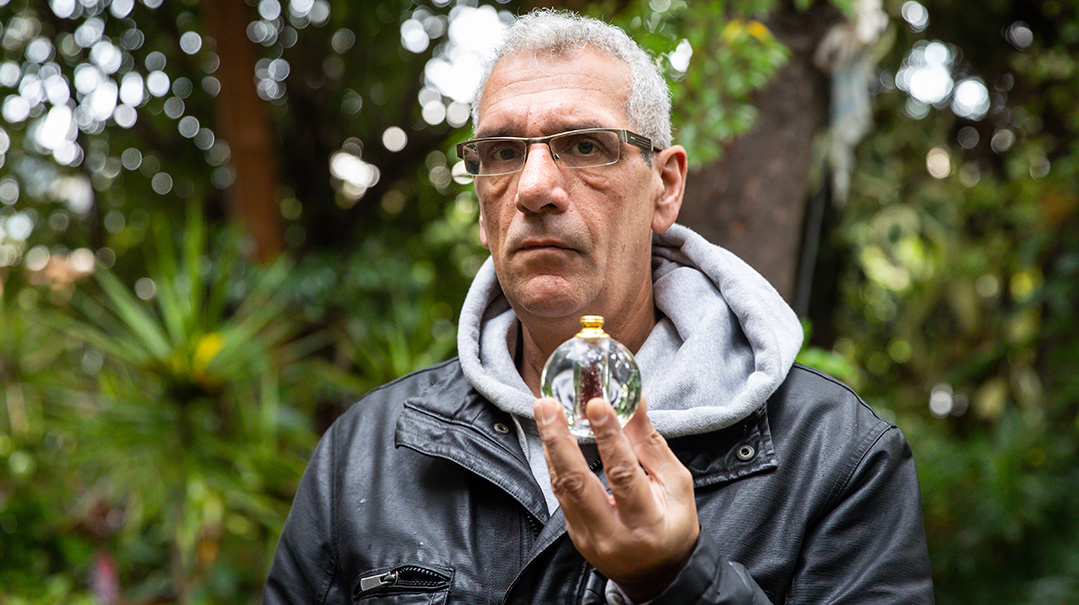Spice of Life
| January 31, 2023Watered with faith, the world's most valuable spice thrives in the Jerusalem Hills

Photos: Itzik Belinsky
“Make a brachah,” says Moshe Kedem in his unequivocal French accent, as he reverently hands over a jar of the most alluring deep yellow spice. “And make sure you have the proper kavanah.”
“Which brachah?” I ask. “Borei minei besamim?”
“Also, but I meant the brachah of Shehecheyanu. Because I don’t think you’ve ever smelled real saffron in your life.”
He was right. And just like the remarkable story of Moshe Kedem’s own life, this exotic spice, specially grown in the Jerusalem Hills just like in the times of Shlomo Hamelech and the rarest and most elusive part of the Ketores incense, might bring us all a step closer to the rebuilding of the Beis Hamikdash.
When this former French-educated artist and lawyer came on aliyah and realized his accreditation wouldn’t be recognized in Israel, he started life over — as a simple gardener. But that eventually led him on a path to teshuvah and ultimately to seek out the rare purple saffron flower, a type of crocus, whose tips at the end of the flower’s three red pistils produce the world’s most expensive spice. Today, he says, he’s involved in the best business imaginable: producing the saffron — the “charcom” of the Ketores — that we mention in our prayers every day.
Back to the Land
French-born Moshe Kedem was in his early twenties and already managing a Paris art gallery after earning degrees in both art and law. But when he turned 24 and faced being drafted into the French military, he decided that if he’d have to be drafted, he’d prefer serving in the Israeli army. And so, in 1997, he made aliyah and enlisted in the IDF, where he served as a tank driver.
After his discharge, he discovered that in addition to his degrees not being accredited, the art industry in Israel operated quite differently from what he knew.
“I didn’t really have a choice,” Moshe says. “Without money, family, support, or even my diplomas, I had to find work, and decided to take the first offer that would come my way.”
And that’s how the artist began to work as a gardener, providing gardening services to public entities, including the Jerusalem Municipality.
“I began from zero, without any knowledge,” he relates. “But I figured out how to hold a hoe and how to clean the area of leaves, and as time went on, I discovered that I actually liked this work. I saw myself connecting to the earth, to growth, to bringing life from the soil. Today I know every stone on Har Hazeisim and Har Hamenuchos, because I was the gardener there.”
Oops! We could not locate your form.







